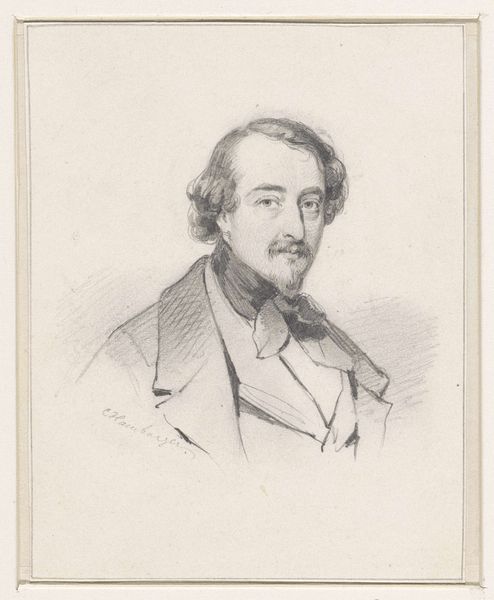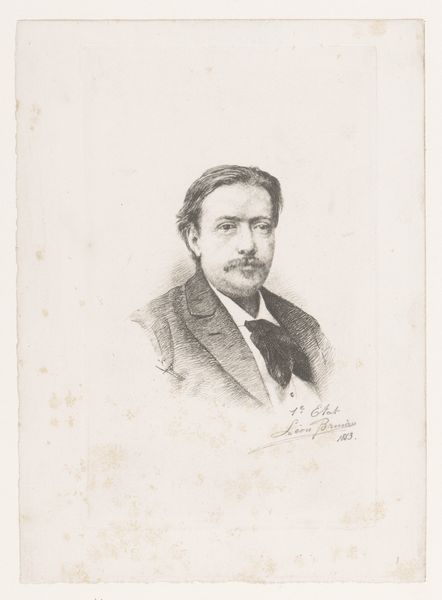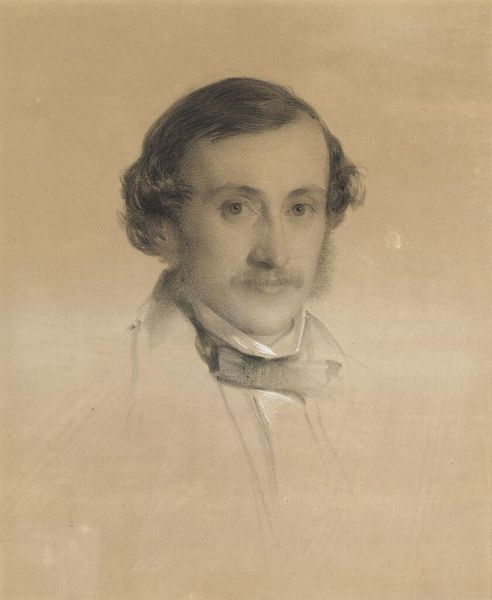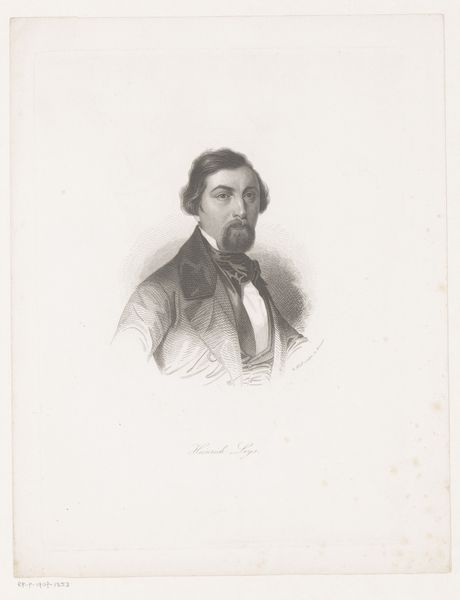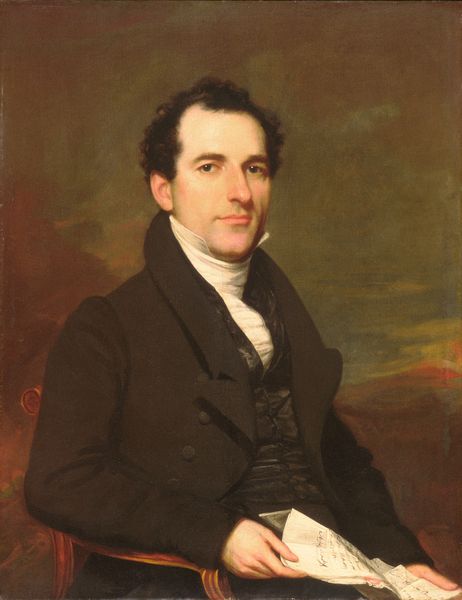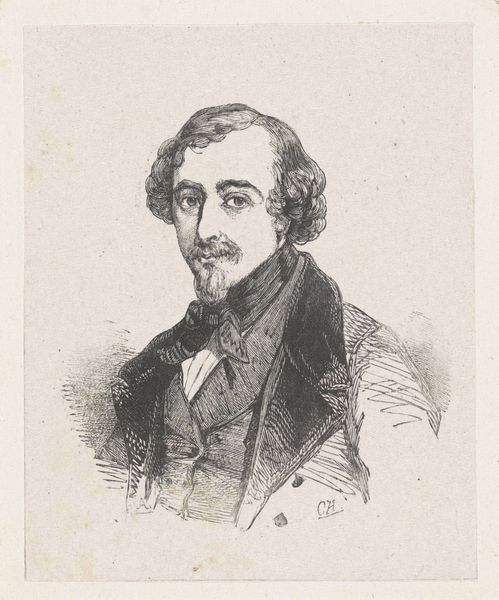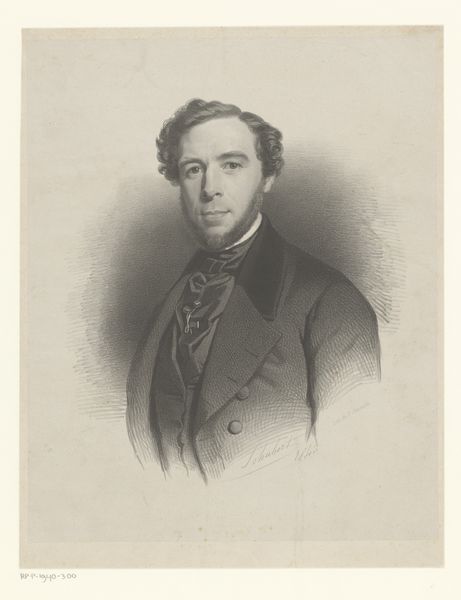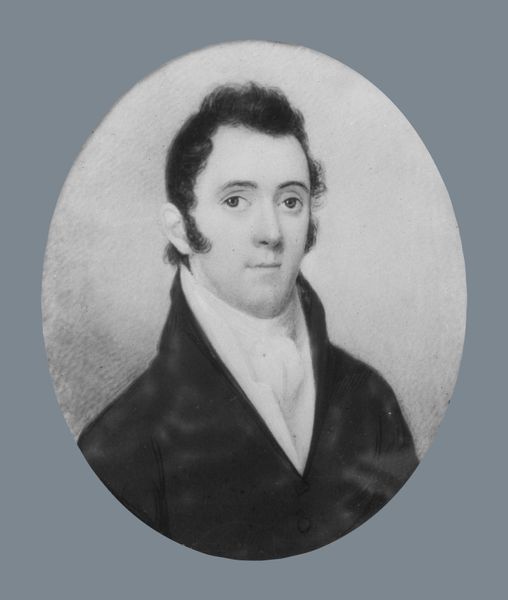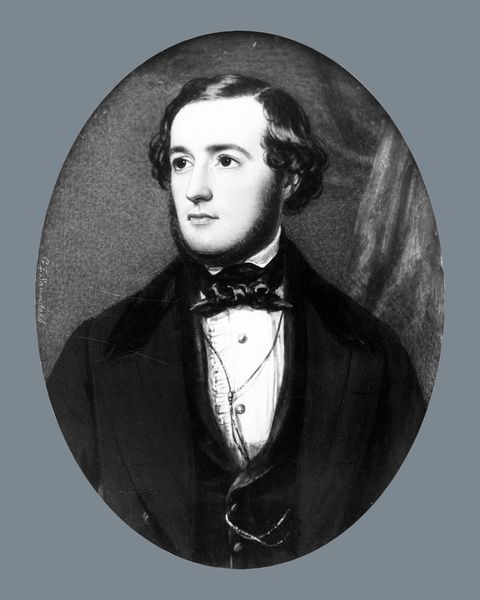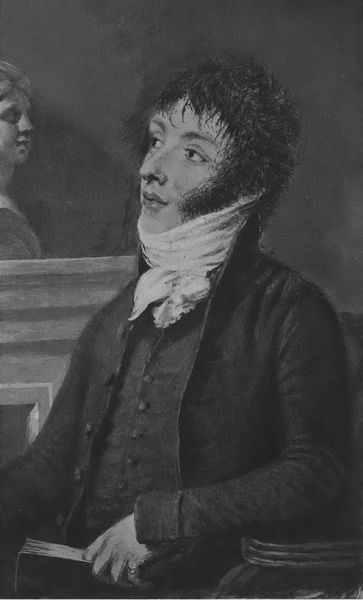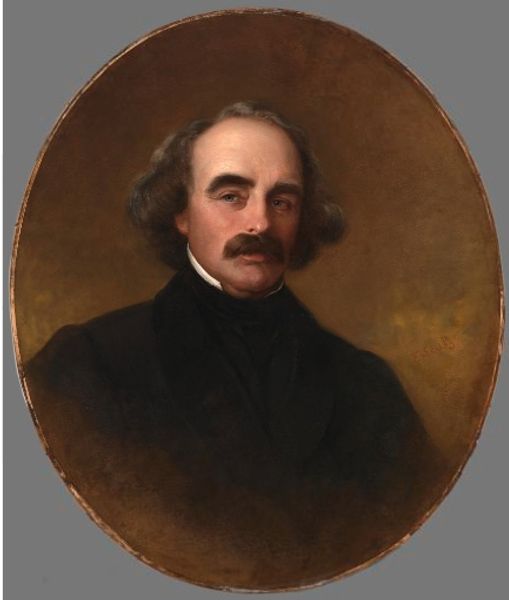
painting, oil-paint, oil-on-canvas
#
portrait
#
portrait
#
painting
#
oil-paint
#
figuration
#
romanticism
#
oil-on-canvas
Dimensions: 28 3/4 × 22 1/4 in. (73 × 56.6 cm)
Copyright: Public Domain
Editor: This is Antonio Maria Esquivel’s "Portrait of a Man," painted in 1843. It's an oil on canvas. The textures, especially in the man's coat, seem so smooth. How do you see this portrait? Curator: Well, I look at it from a materialist point of view. Consider the conditions surrounding the making of this portrait: where did Esquivel obtain his pigments? Were they locally sourced or imported, and what does that tell us about the Spanish economy and trade networks in the mid-19th century? Think about the canvas itself – linen was a costly material. Who could afford such portraits, and what did that say about social status and access to resources? Editor: So, you are looking at what went into making the painting, and what that tells us about society at the time. The cost of materials…that's interesting! I hadn’t thought of it that way. Curator: Exactly! And the labor. Someone prepared the canvas, ground the pigments, stretched the painting. Were these specialized artisans or apprentices? These details embed the artwork within a complex web of production. How do we view it now considering this labor? Editor: That does change things! We often just see the finished product. How would the rise of industrial pigment production later in the 19th century affect portraiture, do you think? Curator: That's a crucial question. Machine-made pigments impacted cost and artistic practices, possibly democratizing art production and availability, but perhaps affecting perceptions of artistic authenticity or craft as well. Editor: I see now – thinking about art from the standpoint of material conditions really opens up new ways to consider its social meaning! Curator: Precisely! Art isn't born in a vacuum. Exploring the materials and labor that went into a piece unveils its deep connection to its historical context.
Comments
No comments
Be the first to comment and join the conversation on the ultimate creative platform.
